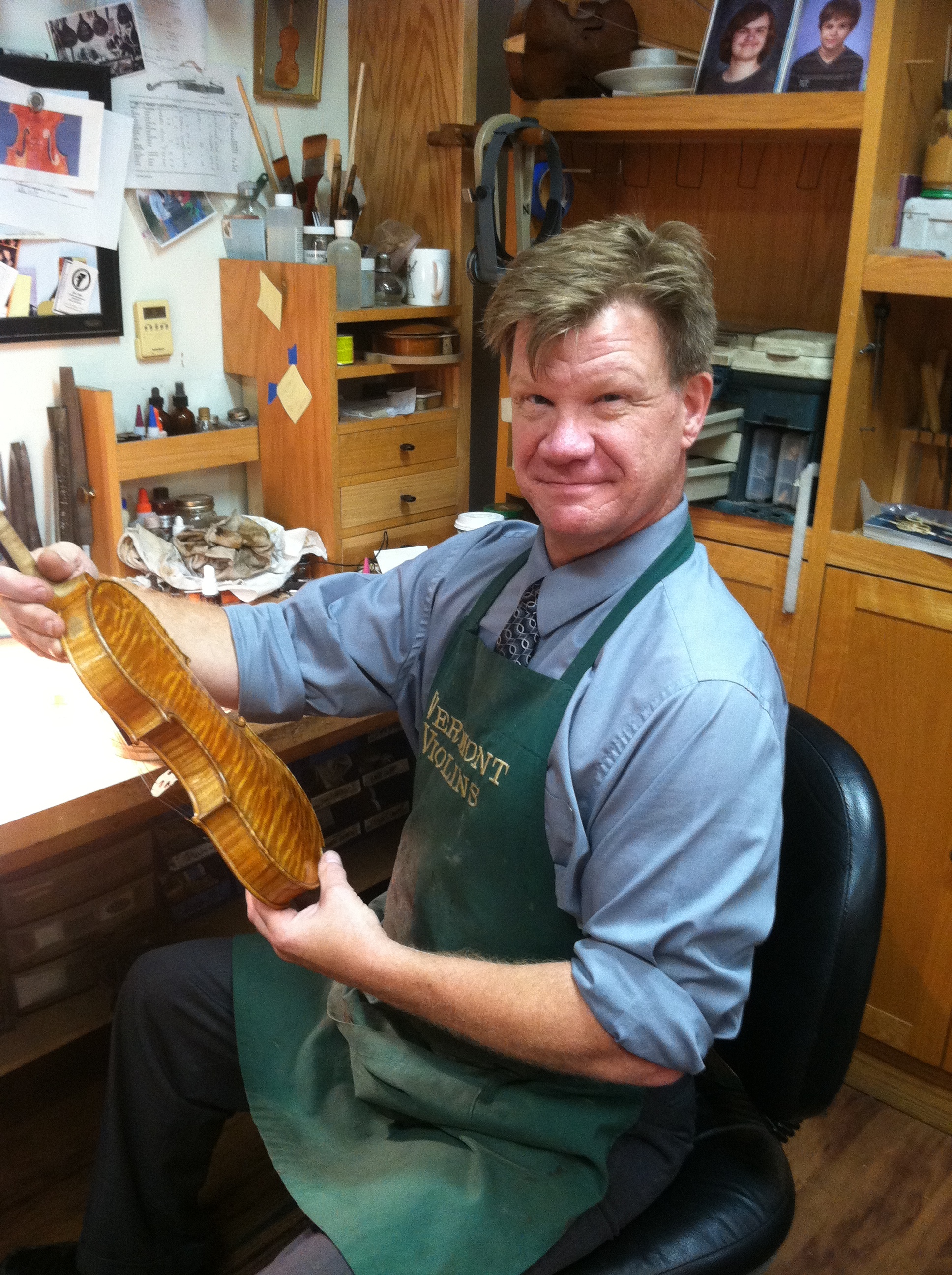When Should I Get My Instruments Checked?
Should I Have My Instrument Checked Up By a Luthier?
art by Tim Newcomb
Have you ever picked up your violin and thought: "you know, I used to really love this violin....I wonder why?" Chances are, the violin is out of adjustment.
As weather changes and humidity levels rise and fall, instruments start to change. Wood expands and contracts and as it does, the set ups, once perfect, no longer perfectly match the instrument and the tonal quality suffers.
The "10,000 Note Check Up" is a comprehensive go-over of the instrument during which the luthier checks the tonal set up, the efficacy of the pegs, the tonal response and accuracy of the strings, and protects the varnish with a professional cleaning and polish.
Perhaps the most important part of the 10,000 Note Check Up is the soundpost adjustment. Soundposts are cut to fit perfectly in a spot selected to fully support the top plate and to maximize the tone of the instrument. Over time, the post can become too short, or too long, and needs to be re-cut or moved to maximize tone. A short post will force a placement that can minimize tone, or cause nasality, and can compromise the top-plate if left short too long. A long post can become too tight, also causing weak sound and, again, compromises the plate. A crack in the top-plate in the soundpost area is perhaps the most dire crack possible: very expensive to repair, tone-altering, and devaluing -- definitely something to be avoided.
Violin soundpost
In addition to checking the post, the luthier will check for open seams. The top and back plates are glued to the ribs with a fairly weak glue that will fail when the wood expands or contracts. This is intentional; if the seam does not fail, the wood can crack causing a far more critical repair. Open seams can be reglued fairly easily. Open seams can be another reason for weak tone as they will restrict a top-plate's vibrancy and can cause unwanted "buzzing" sounds that will drive any player to insanity!
Pegs also need TLC as weather changes. The maple peg box will expand in summer and contract in winter causing pegs to be sticky or slippy. Usually this can be addressed with compounds the luthier applies to the pegs. Over time, the peg holes can become oblate, so a quick re-rounding of the holes can also help the efficacy of the pegs.
Beyond these adjustments, a 10,000 Note Check Up will include a clean and polish (rosin build up will damage the varnish over time and can reduce tone), check strings (they wear out or lose tone after 6-12 months of life), check fingerboards for proper scoop and inspect the bow to see if a rehair is advisable. And, of course, the luthier will check for any other concerns that may have cropped up.
For cellists, the 10,000 Note Check Up is a fine opportunity to have your winter/summer bridge installed. Northern climates, with its intense dryness in winter and higher humidity in summer, almost demand two bridges and cellists up here have a specific bridge for the "high action" or "low action" times of year.
Master luthier James Banicki
The 10,000 Note Check Up is akin to a "wellness visit" to the doctor. You do them as much to address issues as to prevent them and a regular schedule of luthier visits, like doctor's visits, will prevent larger issues from cropping up and will help ensure that your instrument sounds its best!
Any violin purchased from Vermont Violins and the Burlington Violin Shop come with a complementary 10,000 Note Check Up, but a standard check up takes only a half hour (without gluing) and comes with a nominal cost. Some adjustments and repairs are of course charged a la carte, but a half hour when the seasons change can help ensure that your violin, viola, cello or bass is sounding its best, exactly as it wants to sound!
To schedule your 10,000 Note Check Up, click here.



